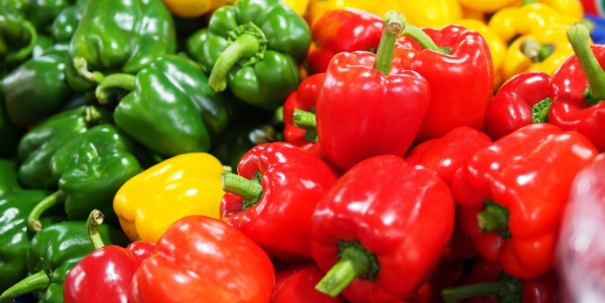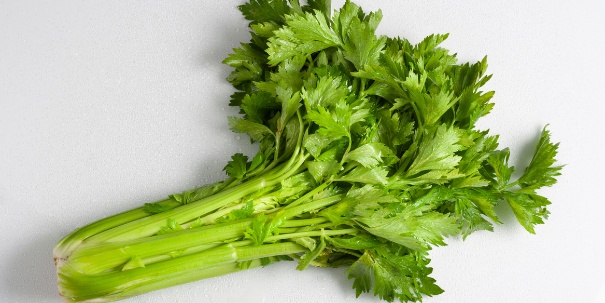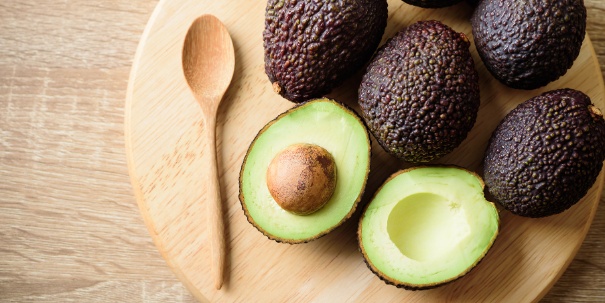Imagine a world where managing your blood sugar doesn't mean sacrificing flavor or feeling constantly deprived. What if you could fill your plate with vibrant, delicious vegetables that not only keep your blood sugar in check but also tantalize your taste buds? It may sound too good to be true, but this is the promise of a low-carb vegetable-rich diet for people managing diabetes.
Why Low-Carb Vegetables Are Diabetes Superheroes

Vegetables are nutritional powerhouses, packed with vitamins, minerals, and fiber, while being naturally low in calories. For people with diabetes, they are particularly beneficial due to their minimal impact on blood sugar levels. This is because carbohydrates are the main dietary component that raises blood sugar, and most vegetables are naturally low in carbs.
The Glycemic Index (GI) and Load (GL): Your Blood Sugar Roadmap
To truly grasp the impact of vegetables on blood sugar, it's essential to understand the concepts of Glycemic Index (GI) and Glycemic Load (GL). The GI ranks carbohydrates based on how quickly they raise blood glucose levels. Foods with a high GI cause a rapid spike in blood sugar, while those with a low GI result in a slower, more gradual rise.
GL, on the other hand, considers both the GI and the quantity of carbohydrates in a serving of food. This provides a more realistic picture of a food's effect on blood sugar.
Most non-starchy vegetables have a low GI and GL, making them excellent choices for people with diabetes. They help to regulate blood sugar levels, preventing the dangerous spikes that can lead to complications.
Here's how you can use this information:
- Pair high-GI veggies with low-GI foods: If you're having a small portion of carrots (higher GI), combine them with foods that have a low GI, like chicken breast and a salad with olive oil dressing. This helps to balance out the overall GI of your meal.
- Portion control is key: Even low-GI vegetables can raise blood sugar if you eat a large quantity. Be mindful of portion sizes, especially with starchy vegetables like corn or peas.

15 Low-Carb Vegetable Superstars to Embrace
1. Leafy Greens: Your Vitamin-Packed Allies

Leafy greens like spinach, kale, and lettuce are nutritional powerhouses that are incredibly low in carbs. They are excellent sources of vitamins A, C, and K, as well as minerals like magnesium and potassium.
- Spinach: This versatile green can be enjoyed raw in salads, sautéed as a side dish, or added to smoothies for a nutritional boost. I personally love adding a handful of spinach to my morning omelet for a boost of vitamins and minerals.
- Kale: Known for its slightly bitter taste, kale can be massaged with olive oil and lemon juice to soften its texture and enhance its flavor. It's delicious in salads, soups, and even smoothies.
- Lettuce: With its refreshing crunch and mild flavor, lettuce is a staple in salads. Opt for darker varieties like romaine or red leaf lettuce for more nutrients.
2. Cruciferous Vegetables: Cancer-Fighting and Blood Sugar-Friendly

Cruciferous vegetables are a family of vegetables known for their potential health benefits, including cancer prevention. They are also low in carbs and high in fiber, making them ideal for people with diabetes.
- Broccoli: This versatile vegetable can be enjoyed raw, steamed, roasted, or stir-fried. I love roasting broccoli florets with a drizzle of olive oil and garlic for a simple and flavorful side dish.
- Cauliflower: A chameleon in the kitchen, cauliflower can be mashed, roasted, or even riced as a low-carb alternative to potatoes. Have you tried cauliflower pizza crust yet? It's surprisingly delicious!
- Brussels Sprouts: Once a dreaded vegetable, Brussels sprouts have become a culinary favorite. Roasting them with balsamic vinegar and a touch of maple syrup brings out their natural sweetness.
3. Asparagus: A Springtime Delight

Asparagus is a spring vegetable that is not only delicious but also low in carbs and high in nutrients like vitamin K, folate, and antioxidants. It can be grilled, roasted, or sautéed and pairs well with lemon juice and Parmesan cheese.
4. Green Beans: Versatile and Affordable

Green beans are a versatile and affordable vegetable that is low in carbs and a good source of vitamins A, C, and K. They can be steamed, sautéed, or roasted and are a delicious addition to stir-fries and casseroles.
5. Peppers: Adding a Punch of Flavor and Vitamin C

Peppers are a great source of vitamin C and antioxidants. Bell peppers can be enjoyed raw in salads, stuffed with a savory filling, or added to fajitas. Chili peppers add a spicy kick to dishes and can boost metabolism.
6. Mushrooms: Umami Bombs

Mushrooms are technically fungi, but they are often categorized as vegetables. They are very low in carbs and calories and provide essential nutrients like selenium and B vitamins. Mushrooms add a savory depth to soups, stir-fries, and sauces.
7. Onions: Flavor Foundations

Onions are a staple in many cuisines and are surprisingly low in carbs. They add flavor to a wide variety of dishes and contain antioxidants and anti-inflammatory compounds.
8. Tomatoes: Bursting with Antioxidants

Tomatoes are often thought of as vegetables, but they are technically fruits. However, they are very low in carbs and packed with nutrients like vitamin C, potassium, and lycopene, a powerful antioxidant. Tomatoes are delicious in salads, sauces, and salsas.
9. Zucchini: The Noodle Master

Zucchini is a summer squash that is low in carbs and calories. It can be spiralized into noodles, grilled, stuffed, or added to stir-fries. Zucchini is also a good source of vitamin C and potassium.
10. Celery: Crunchy and Refreshing

Celery is a crunchy and refreshing vegetable that is very low in carbs. It is often used in salads, soups, and as a healthy snack with hummus or peanut butter.
11. Cucumbers: Hydration Heroes

Cucumbers are another refreshing and low-carb vegetable that is perfect for salads and snacks. They are mostly water, which helps to keep you hydrated, and also contain vitamin K and potassium.
12. Avocado: The Good Fat Wonder

While technically a fruit, avocados are very low in carbs and high in healthy fats, fiber, and potassium. They are a great addition to salads, smoothies, and can be enjoyed as guacamole.
13. Eggplant: A Mediterranean Staple

Eggplant is a versatile vegetable that is low in carbs and a good source of fiber and antioxidants. It can be grilled, roasted, or used in dishes like eggplant Parmesan.
14. Carrots: Vitamin A Powerhouse (Enjoy in Moderation)

While carrots are slightly higher in carbs than other vegetables on this list, they are still a healthy choice for people with diabetes when consumed in moderation. They are packed with vitamin A and fiber.
What does moderation look like? A good rule of thumb is to limit your serving size to about 1/2 cup of cooked carrots or 1 small raw carrot.
15. Beets: For Blood Pressure and Blood Sugar (Enjoy in Moderation)

Like carrots, beets are slightly higher in carbs but offer valuable nutrients like folate and nitrates, which can help lower blood pressure. Enjoy them in moderation, roasted, pickled, or added to salads.
Moderation with beets: A safe serving size for beets is typically around 1/2 cup.
Beyond the Salad: Unleashing the Versatility of Low-Carb Vegetables
Now that you're armed with a list of low-carb vegetable superstars, let's explore some exciting ways to incorporate them into your daily meals.
Stir-fries: Quick, Easy, and Nutrient-Packed

Stir-fries are a quick and easy way to cook vegetables while preserving their nutrients. Use a variety of colorful vegetables like broccoli, peppers, onions, and mushrooms, and add a lean protein source like chicken or tofu for a complete meal.
Soups: Comfort Food with a Healthy Twist

Soups are a comforting and nutritious way to enjoy vegetables. Load up your soup with low-carb vegetables like spinach, kale, zucchini, and carrots. A hearty vegetable soup can be a satisfying meal on its own.
Roasted Vegetables: Bringing Out Natural Sweetness

Roasting vegetables brings out their natural sweetness and adds a delicious caramelized flavor. Toss your favorite vegetables with olive oil, herbs, and spices, and roast them in the oven until tender.
Vegetable Noodles: A Low-Carb Pasta Alternative

Spiralize zucchini or use a vegetable peeler to create long ribbons of vegetables like carrots or cucumbers. These vegetable noodles can be used as a low-carb alternative to pasta in your favorite dishes.
Smoothies: Sneak in Those Greens

Don't forget about smoothies! Add a handful of spinach or kale to your morning smoothie for a boost of nutrients. You can also add other low-carb vegetables like cucumber or celery for a refreshing twist.
Snack Attack: Conquering Cravings with Low-Carb Veggies
Snacking can be a challenge when you're watching your carb intake, but low-carb vegetables can come to the rescue.
- Vegetable Sticks with Dip: Cut up raw vegetables like carrots, celery, cucumbers, and bell peppers and enjoy them with a healthy dip like hummus, guacamole, or Greek yogurt dip.
- Kale Chips: Make your own healthy kale chips by tossing kale leaves with olive oil and spices, then baking them in the oven until crispy.
- Roasted Chickpeas: Roasted chickpeas are a crunchy and satisfying snack that is low in carbs and high in protein and fiber. Toss chickpeas with olive oil and your favorite spices, then roast them in the oven until golden brown.
Tips for Maximizing the Benefits of Low-Carb Vegetables
- Choose a Variety of Colors: Different colored vegetables contain different nutrients, so aim for a rainbow of colors on your plate.
- Don't Overcook: Overcooking vegetables can deplete their nutrients. Steam, sauté, or roast vegetables until they are tender-crisp.
- Add Healthy Fats: Pairing low-carb vegetables with healthy fats like olive oil or avocado can help your body absorb fat-soluble vitamins.
- Season Creatively: Don't be afraid to experiment with different herbs, spices, and seasonings to enhance the flavor of your vegetables.
- Grow Your Own: If you have the space, consider growing your own vegetables. There's nothing quite like the taste of fresh, homegrown produce.
The Bigger Picture: Diabetes Management Beyond Vegetables
While focusing on low-carb vegetables is crucial for managing blood sugar, it's important to remember that diabetes management is multifaceted.
Medication and Monitoring: Your Healthcare Team is Your Ally

If you have diabetes, it's essential to work closely with your healthcare team to develop a comprehensive management plan. This may include medication, regular blood sugar monitoring, and lifestyle modifications.
Regular Exercise: Move Your Body, Balance Your Blood Sugar

Regular physical activity is another cornerstone of diabetes management. Exercise helps to improve insulin sensitivity, which allows your body to use insulin more effectively to regulate blood sugar. Aim for at least 30 minutes of moderate-intensity exercise most days of the week.
Stress Management: Finding Your Calm

Stress can have a negative impact on blood sugar levels, so finding healthy ways to manage stress is important. Techniques like yoga, meditation, and deep breathing can be helpful.
Incorporating a variety of low-carb vegetables into your diet is a delicious and effective way to manage your blood sugar levels and improve your overall health. Remember to choose a variety of colorful vegetables, prepare them in healthy ways, and combine them with other diabetes-friendly foods for optimal results. By embracing a holistic approach that includes diet, exercise, medication (if needed), and stress management, you can take control of your diabetes and live a full and vibrant life.
References
- Effect of a Low-Carbohydrate Diet on Glycemic Control in Outpatients With Type 2 Diabetes
- Efficacy of Low-Carbohydrate Diet for Type 2 Diabetes Mellitus Management: A Systematic Review and Meta-Analysis of Randomized Controlled Trials
- The Effect of a Low-Carbohydrate, Ketogenic Diet Versus a Low-Glycemic Index Diet on Glycemic Control in Type 2 Diabetes Mellitus
- A Low-Carbohydrate Diet Improves Glycemic Control and Reduces Insulin Requirements in Patients With Type 2 Diabetes: A 16-Week Randomized Clinical Trial
- Impact of a 6-month Low-Carbohydrate Mediterranean Diet on Glucose Metabolism and Cardiovascular Risk Factors in Patients with Type 2 Diabetes: A Randomized, Cross-Over, Controlled Trial
- Very Low-Carbohydrate Diet and 6 Months of Weight Loss in Patients with Type 2 Diabetes: A Randomized Trial
- Effect of a Dietary Intervention Emphasizing Nonstarchy Vegetables on Blood Glucose Control in Patients with Type 2 Diabetes: A Randomized Clinical Trial







